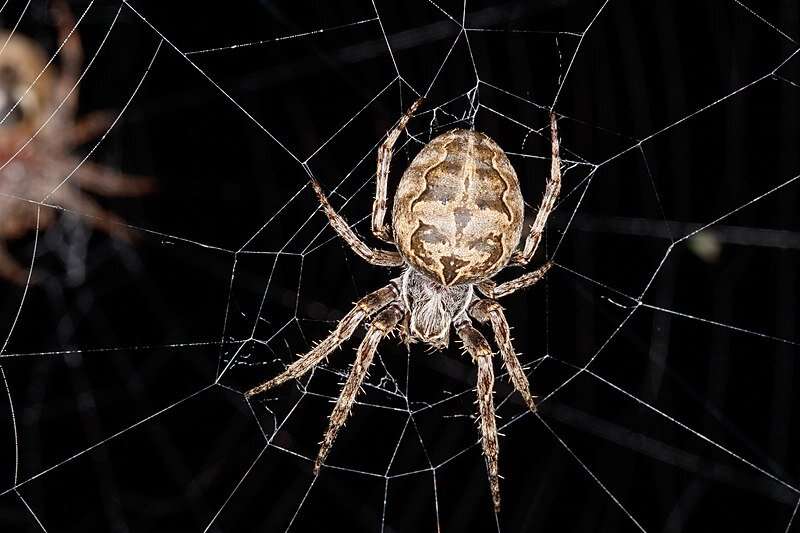Spider webs have been around for at least 100 million years, as evidenced by a rare find of Early Cretaceous amber from Sussex, England. Many spiders weave webs specifically to trap and eat insects. But did you know not all spiders make their web sticky?
Spiders that spin webs do not all make them sticky. One of their many strategies is to spin a fine silky lattice that entangles their prey.
How Do Spiders Produce Webs?
Spinnerets are structures found on spiders’ abdomens, usually on the underside to the rear. These are the organs that spin silk. The number of spinnerets varies by species, but most have a cluster.
Each spinneret has a collection of spigots, which are nozzle-like structures. Each one emits a single silk thread.
Although it looks a bit like an icing nozzle, the silk is pulled out by gravity or the spider’s hind leg. The silk is liquid when it’s inside the spider.
Jan Beccaloni, National History Museum, Arachnid Curator
Before being extruded from the spinneret, cribellate silk goes through a sieve-like structure known as the cribellum. Spiders that produce this type of silk have a row of specialized leg bristles called the calamistrum, which combs the silk out and gives it a woolly texture.
Spiders then follow different patterns of activity to build their webs, depending on the species. (Source: National History Museum)
Not All Spiders are the Same
Although webs are the most well-known application of spider silk, not all spiders weave webs to catch prey. In fact, less than half of Britain’s 37 spider families do.
Other spiders, such as crab spiders in the Thomisidae family, are ‘sit and wait’ predators, such as Misumena vatia, which lurks on flower heads, waiting to ambush visiting insects. Others, such as Saltidae jumping spiders, actively pursue their prey and catch it by leaping on it.
Spiders that do not spin webs use silk to construct molting platforms, sperm webs for males, and retreats.
Jumping spiders, for example, make little silken cells in which to hide in during the day – a bit like a sleeping bag.
Jan Beccaloni, National History Museum, Arachnid Curator
(Source: National History Museum)
How Do Spiders Protect Their Eggs?
Silk is also commonly used as a dragline. A spider will occasionally attach a silk thread to something, such as an anchor so that if it falls, it will not fall too far and can drag itself back up to the previous position.
Another spectacular application of silk is ballooning, which allows for the mass dispersal of spiderlings and small adults.
After reaching a relatively high altitude, the spider extends its abdomen and pulls out one to several threads. The spider follows the lines that are carried upwards by air or electrostatic currents. They can travel thousands of meters.
Money spider mass dispersals, in particular, are a sight to behold. The numbers involved can sometimes leave an entire field coated in gossamer threads.
Not all spiders disperse this way, but it’s the reason spiders are some of the first creatures to colonise new islands.
Jan Beccaloni, National History Museum, Arachnid Curator
(Source: National History Museum)
